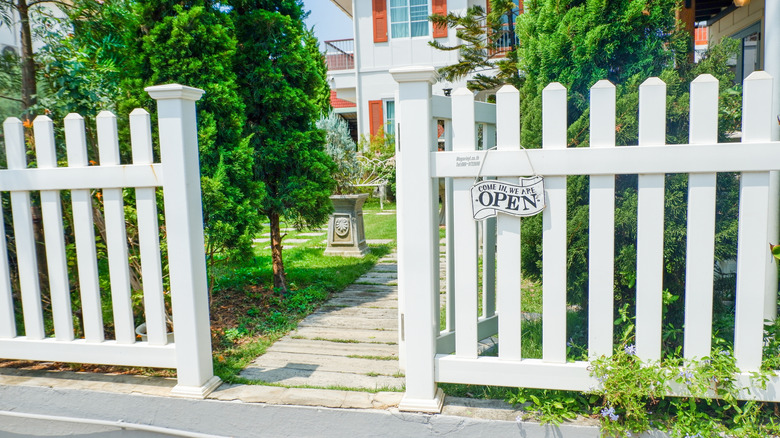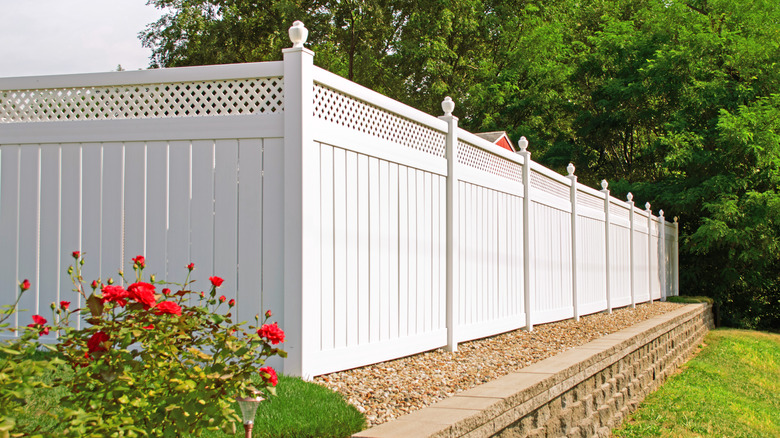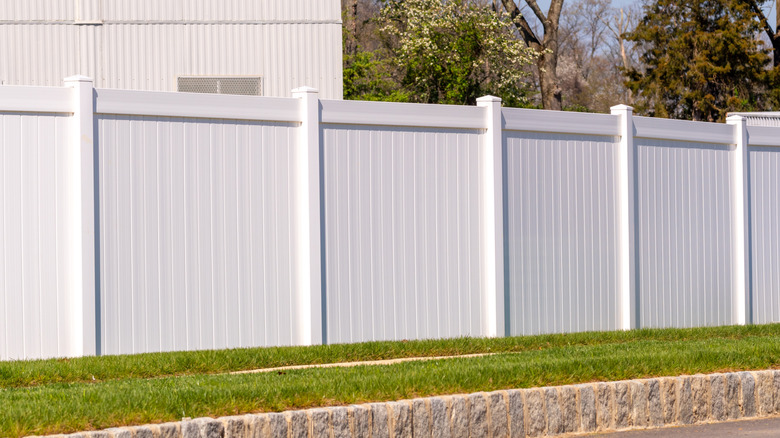The Common Vinyl Fence Installation Mistake To Avoid In Your Yard
A new vinyl fence can truly elevate your outdoor living space, offering privacy and a crisp, clean look — it's also a fence type that instantly boosts curb appeal. Yet there's one seemingly minor misstep during installation that can sabotage all those benefits. It can result in a wavy, unstable fence that falls far short of the picture-perfect fence you imagined. The biggest blunder to avoid? Installing your fence posts too close together.
While it might seem counterintuitive, giving your vinyl panels adequate room to move is important for a durable fence. Although many homeowners assume that tighter fence post spacing means a sturdier fence, the opposite is true for vinyl. These types of panels require specific gaps to account for movement caused by changes in temperature and bad weather. When posts are crammed in, the panels can buckle, which can damage the fence. This mistake can seriously harm how strong your fence is and how good it looks. Avoiding this pitfall from the start will save you time, headaches, and money while improving the longevity of the fence.
The pitfalls of overly tight post spacing
When vinyl fence posts are placed too close together — usually less than the manufacturer's recommended span — you set the stage for a host of problems. Vinyl, like many types of synthetic materials, expands and contracts with fluctuations in temperature. If the panels don't have enough space to move between posts, this natural expansion can cause them to buckle and warp. This isn't just an aesthetic issue; the constant stress can weaken the panel-to-post connections, leading to the collapse of the fence.
Overly tight spacing can make installation more challenging, since getting perfectly level and plumb panels becomes very demanding. You might find yourself struggling to slide panels into channels, or, even worse, forcing them, which can damage the locking mechanisms. This ultimately compromises the longevity and appearance of the fence, making it look damaged and worn. Even though vinyl fencing can warp in the hot summer weather, planning proper spacing is important to minimize the potential for damage and create a beautiful and durable vinyl fence.
Proper post spacing for a flawless finish
Although not all vinyl fencing is the same, all types require proper post spacing and installation. The key to a successful vinyl fence installation lies in following the manufacturer's recommendations for post spacing. While specific measurements can vary slightly between brands and panel styles, a general rule of thumb is to allow between 6- and 8-foot spans between the centers of the posts for standard panels. This measurement accounts for the expansion and contraction of the vinyl, giving the panels the room to move without buckling.
Before digging any post holes, measure and mark your post locations precisely. Using a string line stretched between the corner posts can help maintain a straight line and consistent spacing across the entire fence run. Double-checking these measurements before setting the posts in concrete is very important. Investing a little extra time in the fence layout at the beginning of the project will lead to a straight, sturdy, and visually appealing vinyl fence that will stand the test of time.


